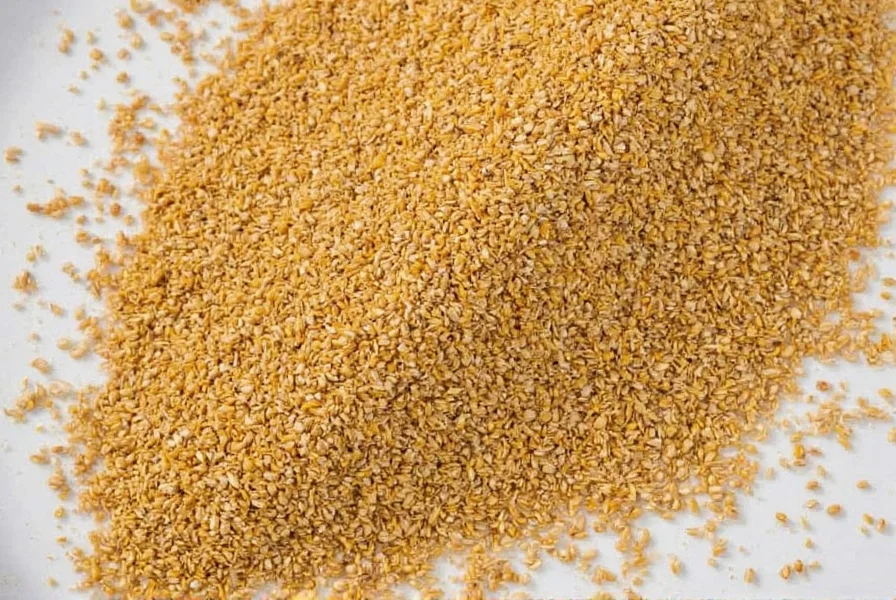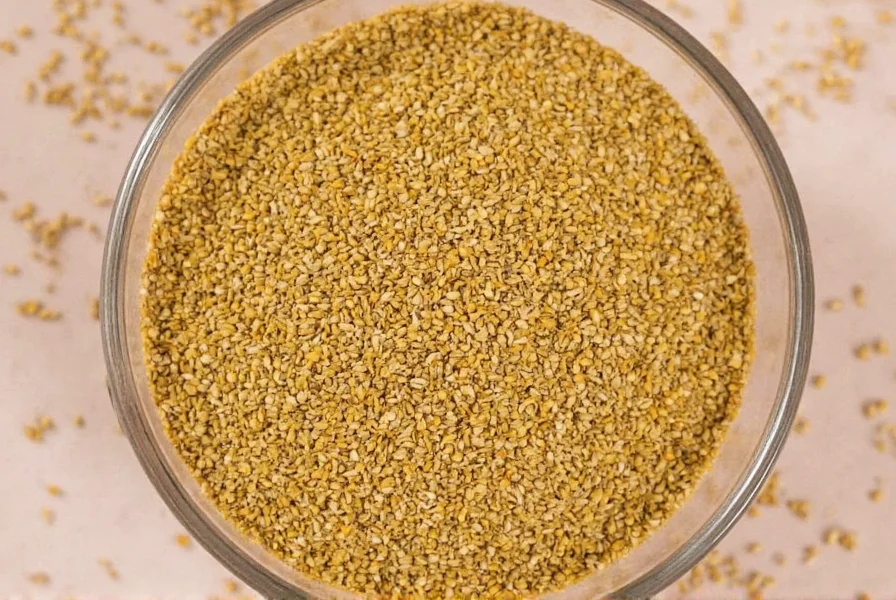Fenugreek seeds (Trigonella foenum-graecum) have been enhancing culinary traditions for thousands of years. These tiny, maple-scented seeds pack a powerful flavor punch that transforms ordinary dishes into extraordinary culinary experiences. Understanding how to properly prepare and incorporate fenugreek seeds into your cooking unlocks their full potential while balancing their naturally bitter notes.
The Culinary Science of Fenugreek Seeds
Fenugreek seeds contain natural compounds that create their signature aroma and taste. When raw, they have a pronounced bitterness that can overwhelm dishes if not properly prepared. The key to successful fenugreek seed usage lies in understanding the transformation that occurs during cooking:
| Preparation Method | Flavor Transformation | Best Used In |
|---|---|---|
| Dry roasting (2-3 minutes) | Bitterness reduces by 60%, nutty notes emerge | Curry bases, spice blends |
| Soaking overnight | Bitterness reduces by 80%, milder flavor | Salads, sprouts, medicinal uses |
| Frying in hot oil | Instant flavor release, complex aroma | Tadka (tempering) for dals and vegetables |
Mastering Fenugreek Seed Preparation Techniques
Professional chefs and home cooks alike use specific techniques to maximize fenugreek seeds' culinary potential. The most reliable method for everyday cooking involves dry roasting:
- Measure seeds into a cold pan (1-2 teaspoons for most recipes)
- Heat over medium-low temperature
- Shake pan frequently until seeds turn golden brown (about 2-3 minutes)
- Immediately transfer to a cool plate to stop cooking
- Use whole or grind as needed
This simple process dramatically improves how to use fenugreek seeds in cooking by developing their natural sugars while reducing harsh bitterness. Never skip this step when creating traditional fenugreek seed recipes, as raw seeds can make dishes unpleasantly bitter.
Classic Fenugreek Seed Recipes Worth Mastering
1. Methi Thepla (Fenugreek Flatbread)
This authentic Gujarati flatbread combines roasted fenugreek seeds with whole wheat flour for a nutritious, flavorful bread perfect with yogurt or pickle.

Ingredients:
- 2 cups whole wheat flour
- 1/4 cup roasted fenugreek seeds (coarsely ground)
- 1/2 cup plain yogurt
- 2 tablespoons oil
- 1 teaspoon turmeric
- 1/2 teaspoon red chili powder
- Salt to taste
- Water as needed
Instructions:
- Dry roast fenugreek seeds until fragrant, then coarsely grind
- Mix all dry ingredients including ground fenugreek
- Add yogurt and oil, knead into soft dough
- Divide into 8 portions, roll into thin circles
- Cook on hot griddle with minimal oil until golden spots appear
- Serve warm with yogurt or mango pickle
2. Sambar with Fenugreek Seed Tempering
This South Indian lentil stew gains incredible depth from fenugreek seeds in the final tempering.
Fenugreek tempering technique:
- Heat 2 tablespoons oil in small pan
- Add 1/2 teaspoon mustard seeds
- When mustard seeds pop, add 1/4 teaspoon fenugreek seeds
- Cook 30 seconds until fenugreek seeds darken slightly
- Add dried red chilies and curry leaves
- Pour this tempering over finished sambar
This easy fenugreek seed technique transforms ordinary sambar into an authentic restaurant-quality dish. The fenugreek seeds release their complex flavor without overwhelming the delicate lentil stew.
Fenugreek Seed Cooking Tips from Professional Kitchens
Seasoned chefs follow these guidelines when working with fenugreek seeds:
- Start small: Begin with 1/4 teaspoon per serving and adjust to taste
- Balance bitterness: Pair with sweet elements like tomatoes or jaggery
- Storage: Keep in airtight container away from light (lasts 6 months)
- Substitution: In emergencies, use 1/8 teaspoon fenugreek leaves per 1/4 teaspoon seeds
- Grinding: Use a dedicated spice grinder as fenugreek seeds leave strong residue
Many home cooks make the mistake of using too many fenugreek seeds, resulting in unpleasantly bitter dishes. Remember that these seeds intensify in flavor during cooking, so it's always better to start with less and add more if needed. This principle is essential for creating balanced authentic Indian fenugreek seed recipes.
Common Mistakes to Avoid with Fenugreek Seeds
Even experienced cooks sometimes struggle with fenugreek seeds. Here are the most frequent errors and how to fix them:
- Over-roasting: Burnt fenugreek seeds become extremely bitter. Remove from heat the moment they turn golden.
- Incorrect measurements: Use measuring spoons, not estimates, especially for beginners.
- Adding at wrong time: For tempering, add fenugreek seeds after mustard seeds but before curry leaves.
- Using expired seeds: Old seeds lose flavor and become musty. Fresh seeds should have a pleasant maple-like aroma.
When creating your own fenugreek seed dishes, always taste as you go. The flavor develops during cooking, so what seems mild at first can become overpowering by the end of the cooking process. This attention to detail separates good fenugreek seed cooking from great fenugreek seed cooking.
Expanding Your Fenugreek Seed Repertoire
Once you've mastered basic fenugreek seed preparation methods, experiment with these advanced applications:
- Create a fenugreek-infused oil by gently heating seeds in oil for 10 minutes, then straining
- Add ground roasted fenugreek to homemade curry powder blends
- Use in pickling brines for added complexity
- Incorporate into bread doughs for savory focaccia variations
- Make a fenugreek seed tea by steeping 1 teaspoon in hot water for digestive benefits
These creative applications demonstrate the versatility of fenugreek seeds beyond traditional recipes. The best fenugreek seed dishes often come from understanding the seed's flavor profile and adapting it to your personal taste preferences.
How do I reduce the bitterness of fenugreek seeds in cooking?
The most effective method is dry roasting fenugreek seeds for 2-3 minutes until golden brown, which reduces bitterness by approximately 60% while enhancing nutty flavors. Alternatively, soaking seeds overnight reduces bitterness by 80% for milder applications. Always start with small quantities (1/4 teaspoon per serving) and adjust to taste, as fenugreek's bitterness intensifies during cooking.
Can I substitute fenugreek leaves for fenugreek seeds in recipes?
Yes, but with important adjustments. Use 1 teaspoon dried fenugreek leaves (kasuri methi) to replace 1/4 teaspoon fenugreek seeds. The flavor profile differs significantly - seeds have stronger bitterness and maple notes while leaves offer more herbal, celery-like flavor. For authentic Indian fenugreek seed recipes, seeds cannot be perfectly replicated by leaves, but this substitution works in emergencies.
What's the proper way to store fenugreek seeds for maximum freshness?
Store fenugreek seeds in an airtight container away from light and heat. A dark cupboard works well for short-term storage (up to 6 months). For longer storage, keep in the refrigerator where they'll maintain optimal flavor for 12-18 months. Properly stored seeds should have a pleasant maple-like aroma; if they smell musty or stale, they've lost potency and should be replaced.
Which dishes benefit most from fenugreek seeds?
Fenugreek seeds excel in lentil dishes (dals), vegetable curries, pickles, and flatbreads. They're essential in South Indian sambar and certain North Indian meat curries. The seeds work particularly well with potatoes, spinach, and tomatoes, which help balance their bitterness. For beginners, try adding 1/4 teaspoon roasted seeds to potato curry or dal tadka for an authentic flavor boost without overwhelming bitterness.
How can I tell if my fenugreek seeds have gone bad?
Fresh fenugreek seeds should have a distinctive maple-like aroma and uniform amber color. Signs of spoilage include: musty or rancid smell, faded color, visible mold, or a soft texture instead of hard crunch. Properly stored seeds maintain quality for 6-12 months. If your seeds lack aroma or taste excessively bitter even after proper roasting, they've likely lost potency and should be replaced for best results in fenugreek seed dishes.











 浙公网安备
33010002000092号
浙公网安备
33010002000092号 浙B2-20120091-4
浙B2-20120091-4